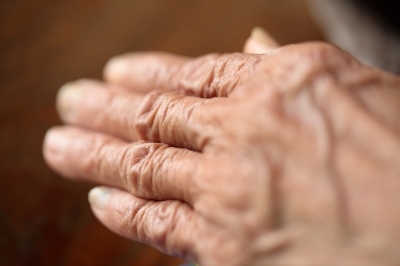How to Manage Arthritis

Arthritis is a painful disease that ails about 30 million Americans every year, and while it can certainly detract from your quality of life, there are ways to manage arthritis to reduce its painful effects.
Too many people rely on pain killers to manage their arthritis, but taking too much medication can lead to other health issues and it isn’t as effective as some less intrusive options. NSAIDs (non-steroidal anti-inflammatory drugs), for example, like Celebrex, ibuprofen and naproxen can lead to heart disease or gastrointestinal bleeding. More drastic drugs like morphine come with a list of side effects and can lead to dependency.
Natural Solutions for How to Manage Arthritis
 By not focusing so much on reducing pain, but instead on how to stop the cause of the pain, you can experience a drastic reduction in arthritis pain; thereby learning how to manage arthritis and live pain-free (or close to it!). It’s all about making healthy lifestyle choices that get to the root cause of the problem so that symptoms simply don’t come up as often.
By not focusing so much on reducing pain, but instead on how to stop the cause of the pain, you can experience a drastic reduction in arthritis pain; thereby learning how to manage arthritis and live pain-free (or close to it!). It’s all about making healthy lifestyle choices that get to the root cause of the problem so that symptoms simply don’t come up as often.
When it comes down to it, arthritis is a disease of inflammation, so any steps you take to reduce inflammation in your body can help reduce your arthritis symptoms, and there are many ways to do that. Below, we’ve compiled a list of natural solutions that will teach you how to manage arthritis so that it doesn’t rule your life.
Low-Impact Exercise – It can feel counterproductive to exercise when you are in pain, but arthritis symptoms are typically reduced with consistent exercise, as long as you engage in low-impact exercises like swimming, cycling, walking, tai chi, and yoga. Higher impact exercises like running, jogging and jumping can put too much strain on the joints, so if you have arthritis, it is best to stay away from those. Make sure you proceed with caution and consult a physician to come up with an exercise routine. Never overexert yourself or work through pain as that can worsen your condition.
Apply Heat – Heat works to increase blood flow to a painful area, serving to decrease byproducts that cause pain like lactic acid. If you have osteoarthritis, heat will be more effective than cold. You can try taking a hot bath or applying a heating pad or warm compress.
Reduce Stress – Stress can lead to inflammation because it produces chemicals in the body that increase inflammation. Anything you can do to reduce stress in your life will serve you and your arthritis well. Try meditation, journaling, yoga, tai chi, walking in nature, or anything else that relaxes you and reduces anxiety. Some people might need to take more drastic measures like changing jobs or relationships depending on the level of stress they cause.
Acupuncture – This ancient healing modality is a highly effective form of pain relief, and many people have learned how to manage arthritis with this method. Needles are placed along energy pathways in the body, stimulating the production of endorphins, which are the body’s natural painkillers. While needles sound like something that will hurt, anyone who has had acupuncture will tell you it is actually a very relaxing and enjoyable process. It can be an effective solution for anyone wondering how to manage arthritis.
Manage Your Weight – Excess weight adds stress to the joints and can have a huge impact on how much arthritis pain you will feel. Don’t get involved with unhealthy weight loss strategies, however. Learn more here: How to Spot a Fad Diet.
Omega-3 Fatty Acids – Consuming omega 3s is a great way to reduce inflammation in the body, and therefore manage arthritis. Increase your intake of flax seed meal, walnuts, fortified eggs and cold-water fish like salmon, sardines and cod to get more omega 3s into your diet. Alternatively, you can take an omega-3 supplement. Learn more about eating to reduce inflammation here: Nutrition for Arthritis.
Vital Oils – Unlike vegetable oils like corn, sunflower or safflower oils, which increase inflammation in the body, extra virgin olive oil actually reduces it. This vital oil is like medicine in the body, and it makes up an important part of the Mediterranean diet, which is considered to be an anti-inflammatory diet. Learn more about vital oils here.
Quit Smoking – Smoking can actually worsen arthritis pain. This is thought to be because smoking increases oxidative stress in the body, which can cause cartilage loss. If you are wondering how to manage arthritis pain and you smoke, quitting should be your first step.
Relax the Muscles – When your muscles are relaxed, the joints are able to move easier and with less pain. Heat, acupuncture, meditation, yoga and massage are all effective ways to relax the muscles.
Solve Sleeping Issues – Pain can lead to fatigue, and if we feel fatigued, we will feel more pain – it’s a vicious cycle. In addition, if we don’t get enough sleep, the body can’t go through its normal functions to heal itself, which often takes place during deep sleep. When we sleep well, we feel refreshed in mind and body, breaking the pain cycle. Here are some tips for better sleep.
Curcumin – This anti-inflammatory substance occurs naturally in herbs like turmeric and cayenne pepper. It has dramatic results without the side effects of pharmaceutical drugs. You can take it in supplement form or simply use the spices more often when cooking.
Learning how to manage arthritis pain can feel like a daunting task at first, but when you engage in a healthier lifestyle by trying some of the modalities and products we mentioned above, you can begin to feel the results rather quickly, usually within a week or so. You don’t have to live with the pain, and these natural options are free from side effects.
Share this Image On Your Site
Sources:
http://www.beliefnet.com/Health/Physical-Health/Tips-for-Managing-OA.aspx
http://www.cdc.gov/arthritis/basics/management.htm
http://www.mayoclinic.org/diseases-conditions/arthritis/in-depth/arthritis/art-20046440
Photo Credit: freedigitalphotos.net, Photokanok





